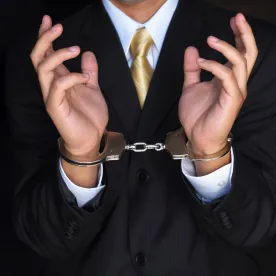In a recent opinion, the United States Court of Appeals for the Ninth Circuit expanded the protections afforded to individual members of an official creditors’ committee against certain lawsuits. Specifically, in In re Yellowstone Mountain Club, LLC, 841 F.3d 1090 (9th Cir. 2016), the Court unanimously held that the Barton doctrine (also known as the prior leave requirement) applies to lawsuits brought against individual members of an official creditor committee for actions taken in their official capacities.
The Barton doctrine was originated by the United States Supreme Court in 1881 in Barton v. Barbour, 104 U.S. 126, and stands for the proposition that before a plaintiff can commence an action against a receiver, the plaintiff must first obtain permission to do so from the court that appointed the receiver. As interpreted and applied by the bankruptcy courts, the doctrine has been found to require that a plaintiff must obtain prior authorization from the bankruptcy court before initiating an action in another forum against certain officers appointed by the bankruptcy court for actions taken by those officers in their official capacities.
In the late 1990s, Timothy Blixseth and his wife, Edra, developed the Yellowstone Mountain Club, an exclusive ski and golf resort in Montana that catered to wealthy patrons. As part of the development, Mr. Blixseth borrowed $375 million from Credit Suisse on behalf of the Yellowstone Mountain Club and certain affiliated entities, but used some of the proceeds to satisfy personal debts (Mr. Blixseth alleged that he was advised by his counsel, Stephen Brown, that his actions were lawful). When the shareholders of the Yellowstone entities learned of Mr. Blixseth’s actions, they sued in Montana state court and the action was eventually settled. At approximately the same time, Mr. Blixseth and his wife divorced and the marital settlement agreement gave the Yellowstone Mountain Club entities to Mrs. Blixseth.
In November 2008, Mrs. Blixseth filed chapter 11 petitions on behalf of the Yellowstone Mountain Club entities and a nine member creditors’ committee was appointed. The chair of the creditors’ committee was Mr. Blixseth’s former counsel, Stephen Brown. Mr. Blixseth believed that Brown used confidential information to his detriment in the bankruptcy proceedings and sued Brown in federal district court. The district court held that it did not have jurisdiction to hear Mr. Blixseth’s lawsuit because he had not first obtained the bankruptcy court’s permission to bring an action, as required by Barton.
Mr. Blixseth then requested permission from the bankruptcy court to prosecute his action in district court and explained that a number of his claims against Brown were based on pre-petition conduct and therefore outside the scope of Brown’s actions as a member and chair of the creditors’ committee. The bankruptcy court found that it was impossible to separate the pre-petition and post-petition claims, denied the motion, and separately dismissed the claims on the merits. The district court affirmed the bankruptcy court’s ruling and Mr. Blixseth appealed to the Ninth Circuit.
The Court began its analysis by acknowledging that no court of appeals had gone so far as to apply the Barton doctrine to suits against individual creditors’ committee members. However, the Court explained that certain Circuits, most notably the Sixth and Eleventh Circuits with respect to the trustee’s counsel and parties authorized to sell estate property, respectively, had extended Barton to actors that were not bankruptcy trustees or receivers based on a “functional equivalent” analysis.
With respect to individual committee members, the Ninth Circuit relied on this same functional equivalent line of cases and stated that the “creditors [on a creditors’ committee] have interests that are closely aligned with those of a bankruptcy trustee” and that “there’s good reason to treat the two the same for purposes of the Barton doctrine.” The Court expanded on this by explaining that creditors’ committees are statutorily obligated to perform certain tasks related to the administration of the estate (see 11 U.S.C. § 1103(c)(2)), that they participate in the formulation of a plan, and that they examine the debtor. The Court was also especially mindful that any suit brought outside of the bankruptcy court (at least without the bankruptcy court’s permission) has the potential to interfere with a committee’s ability to discharge its responsibilities, could unnecessarily complicate bankruptcy proceedings, and potentially even make committee members timid in discharging their duties. Accordingly, the Ninth Circuit held that the Barton doctrine is applicable to creditors’ committee members who are sued for acts performed in their official capacities, and that any such suit must be brought in the bankruptcy court or in another court only with the express permission of the bankruptcy court.
Importantly, however, the Court’s ruling with respect to the Barton doctrine only extends to actions taken by official committee members acting in their capacity as a committee member and not to pre-petition actions or actions taken outside the scope of a creditor’s capacity as a committee member. The Court specifically rejected the bankruptcy court’s conclusion that Mr. Blixseth’s pre- and post-petition claims were so intertwined that they could not be separated, and found that Mr. Blixseth did not need permission to pursue malpractice and other claims against Brown that pre-dated Brown’s membership on the Committee and arose out of Brown’s role as his former counsel.
While it is well settled that individual committee members are entitled to a form of immunity for actions taken within the scope of the committee’s authority, and individual committee members typically receive exculpation through a chapter 11 plan, those protections are not absolute. For example, a committee member’s qualified immunity can be lost in the event of willful misconduct or ultra vires acts, and a plan with full exculpation is not confirmed in every chapter 11 case. Moreover, the standards for whether immunity applies or exculpation is appropriate can vary between jurisdictions. As a result, any decision that enhances the protections afforded to committee members is important.
At least in the Ninth Circuit, this ruling provides individual members of committees an important additional layer of protection against lawsuits that stem from discharging their committee member duties. The ability to potentially confine these types of actions to the bankruptcy court, where the judge is likely to be more sympathetic to a committee’s role in a chapter 11 case, is very valuable and its impacts should not be underestimated.




 />i
/>i

